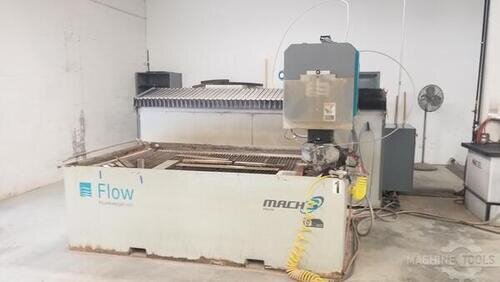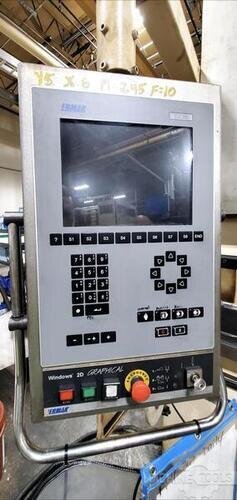I’ve always felt that genuine collaboration is the foundation of any successful safety initiative. Every time I meet with a client, I make it my priority to understand their day-to-day operations and identify potential risks. Their insights help me craft effective solutions that keep everyone safe while enhancing overall productivity.
How I Foster Safety by Listening and Partnering
When I step onto a shop floor, I’m there to learn as much as I can about how teams work and where they might need extra support. By asking questions and listening to their challenges, I’m able to gauge which safety measures will serve them best. This open dialogue helps create a partnership rather than a simple vendor-client transaction.
I’ve found that forging a real connection with each team makes it easier to implement practical safety measures. For instance, if a crew is pressed for time because of a tight production schedule, I’ll look at how certain laser or press brake setups could be streamlined without compromising anyone’s well-being. It’s all about respecting the company’s workflow while prioritizing the health and safety of the team.
In my role at Mac-Tech, I stay committed to offering solutions tailored to each customer’s needs. Even if it’s something as straightforward as adjusting beam coping procedures for a more secure fit-up, I’m invested in helping them find the best way to keep both efficiency and safety in balance.
My Approach: Building Trust Through Safety Collaboration
My philosophy is that trust is built one conversation at a time. I don’t just give suggestions—I work side-by-side with clients to validate every step of the process. Whether I’m explaining how a tube laser improves cut quality or demonstrating best practices for beam line robotic coping, my priority is ensuring everyone feels comfortable and confident moving forward.
Clients often tell me they appreciate my attention to detail and personable style. I don’t merely provide information; I ensure they understand why these safety measures matter. I believe that when people see you’re invested in their success, they’re more willing to adopt new ideas and procedures.
Safety collaboration means continuous learning, too. Whenever a new beam coping methodology or machine enhancement comes along, I do my research and share updates with my network. I want to help them capitalize on advances that boost both productivity and peace of mind.
Ensuring Customer Satisfaction via Consultative Solutions
I recognize that every fabrication shop has its unique scope of challenges. My consultative approach starts with a thorough assessment, where I gather details about the existing equipment, goals, and pain points. From there, I can advise on optimizing everything from flat lasers to press brakes, so clients get the most out of their machines.
When I suggest a solution—say, introducing a robotic coping line—it’s because I’ve carefully weighed time savings, production improvements, and safety enhancements. By analyzing all these variables, I guide clients to a well-rounded decision that won’t compromise their bottom line or the welfare of their workforce.
Throughout each project, my focus stays on clear communication. I break down technical details in a way that’s easy to digest, ensuring everyone knows what to expect and how a solution aligns with their objectives. This consultative style has helped me build long-term relationships based on trust and mutual respect.
AFD Plate Drilling Machines
Promoting Beam Coping Safety Through Shared Expertise
Every safety recommendation I make is backed by hands-on experience and ongoing research. I constantly explore advancements in tube bending, beam line robotic coping, and laser technology, then I distill these findings into practical tips for clients. Sharing my expertise is my way of helping them make well-informed decisions.
Over the years, I’ve discovered that even small tweaks in operational routines can make a substantial difference. Simple improvements—like repositioning safety guards or adjusting operator guidelines for press brakes—add up to a safer environment. My job is to pinpoint these opportunities and show how they can be implemented quickly and effectively.
I’m mindful that each team has different learning styles and levels of automation proficiency. That’s why I tailor my training sessions and follow-ups to fit their needs. By taking the time to ensure that everyone from operators to supervisors is on the same page, it becomes much easier to maintain the momentum of a robust safety culture.
FAQ Section
How do you determine which safety measures are best for our specific beam coping process?
I start by assessing your current setup, identifying any risks, and listening to your unique challenges. From there, I recommend targeted improvements that fit seamlessly into your existing workflow.
What if we need more advanced machinery, like flat or tube lasers, to optimize safety?
I’ll explain the benefits and limitations of each technology and guide you in choosing the right equipment that meets your safety and efficiency goals.
Can you help train our staff on new safety protocols for beam operations?
Absolutely. I provide hands-on training and support, ensuring everyone understands the procedures and feels comfortable implementing them.
How frequently should we update or audit our safety measures around beam coping?
I advise conducting regular reviews, at least once or twice a year, to catch any emerging issues and to adapt processes to new industry standards.
Does investing in safety necessarily slow down production?
Not if it’s done right. In many cases, better safety protocols can streamline operations by reducing downtime due to accidents or equipment failure.
Get Weekly Mac-Tech News & Updates








